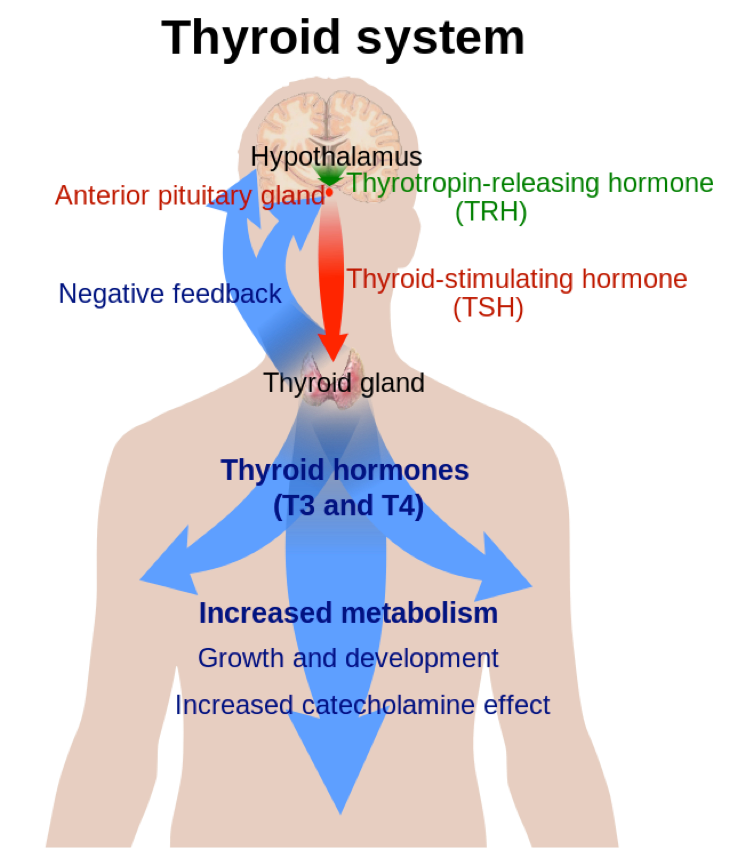Article
New Guidelines for Thyroid Disease Screening: Perspectives for Pharmacists
Author(s):
The US Preventive Services Task Force recently updated its clinical guidelines on screening for thyroid dysfunction.
The US Preventive Services Task Force (USPSTF) recently updated its clinical guidelines on screening for thyroid dysfunction.
Conflicting with recommendations from the American Thyroid Association (ATA) and the American Academy of Clinical Endocrinology (AACE), the USPSTF still advises against routine screening of thyroid-stimulating hormone (TSH) levels in nonpregnant, asymptomatic adults. Instead, the expert panel recommends targeted TSH screening for patients with certain risk factors.
Factors that place patients at greater risk for elevated TSH levels include older age, Caucasian ethnic background, type 1 diabetes, Down syndrome, and external-beam radiation in the head and neck area, according to the USPSTF. Other factors include family history of thyroid disease, goiter, and previous hyperthyroidism.
Risk factors associated with low TSH levels include female gender, older age, African ancestry, low iodine intake, and chronic use of medications containing an iodine moiety—most prominently amiodarone. Patients with a personal or family history of thyroid disease are also at risk of developing low TSH levels.
After detection of out-of-range TSH levels, nonpregnant patients should be monitored with multiple TSH readings over 3 to 6 months, the USPSTF recommends.
Thyroid abnormalities may also be associated with certain symptoms. Thyroid hormone deficiencies, which are among the most common endocrine diseases, may manifest with fatigue, weight gain, and hair loss. Patients may complain of feeling cold, even when temperatures are normal. Constipation is another common yet nonspecific finding.
Because thyroid disease is a clinical diagnosis, there is no consensus on TSH levels that definitively require treatment. As TSH levels may not always agree with symptoms, some patients may fall into the category of subclinical hypothyroidism or hyperthyroidism. These patients may receive treatment even though TSH levels are not strictly consistent with thyroid disease.
As a general rule, updated screening guidelines from the USPSTF suggest patients with TSH levels <0.1 mIU/L—and especially those with Graves’ disease or nodular thyroid disease—should receive treatment with antithyroid medication, such as methimazole, or nonreversible thyroid ablation therapy. Conversely, nonpregnant patients with TSH levels ≥10 mIU/L will generally require treatment with thyroid hormone replacement therapy.
Continued monitoring is important for patients with subclinical TSH abnormalities, as they often progress to overt hypothyroidism or hyperthyroidism.
Clinically relevant points for pharmacists managing patients with thyroid disorders include:
Screening:
o The ATA recommends beginning TSH screening in all adults at age 35, with repeat tests every 5 years.
o The AACE recommends routine TSH screening in older patients, with no specified age.
o The USPSTF continues to recommend against routine screening for thyroid disease among nonpregnant adults.
Treatment:
o Guidelines recommend taking levothyroxine with water at the same time each day—either 30 to 60 minutes before breakfast, or 4 hours after the last meal of the day (at bedtime).
o Medications that can cause thyroid abnormalities include lithium, interferon alpha, amiodarone, or excess iodine ingestion (including iodine from dietary sources).
o TSH levels vary throughout the day (lowest in the late afternoon, highest at bedtime), so blood tests are merely an estimate of thyroid function, and may vary 40% to 50% between readings in the absence of any change in thyroid function.
o A total thyroid replacement dose constitutes 1.6 µg per kilogram of ideal body weight; doses in this range should not be used in patients with subclinical hypothyroidism.
o Patients should not start levothyroxine at the total thyroid replacement dose; rather, the dose should be titrated based on TSH levels.
o The elderly and patients with heart disease require lower starting doses of levothyroxine, slower dosage titration, and 20% to 25% lower replacement doses than younger patients.
o Dosing may start based on TSH levels (eg, 25 µg daily for TSH levels 4 to 8 mIU/L, 50 µg daily for TSH 8-12 mIU/L, and 75 µg daily for TSH >12 mIU/L). Further adjustments should generally be gradual, so pharmacists should question any prescription advancing a dose by more than 1 increment (eg, going directly from 25 µg to 75 µg daily)
o Explain to patients that normalization of TSH levels is not instantaneous and may take several months. The expectation of prompt TSH normalization leads many patients to believe generics do not work as well as brand-name thyroid replacement products.
Pregnancy:
o TSH should be measured immediately after conception. Goal TSH levels are 2.5 mIU/L in the first trimester, while levels of 3 and 3.5 mIU/L are acceptable in the second and third trimesters.
o Women who are pregnant or planning a pregnancy should not use levothyroxine with liothyronine together; levothyroxine alone is preferred.
o Levothyroxine doses may need to be increased during pregnancy, and may be reduced after delivery.
References
1. LeFevre ML; U.S. Preventive Services Task Force. Screening for thyroid dysfunction: u.s. Preventive services task force recommendation statement. Ann Intern Med. 2015;162(9):641-650.
2. Garber JR, Cobin RH, Gharib H, et al. Clinical practice guidelines for hypothyroidism in adults: cosponsored by the American Association of Clinical Endocrinologists and the American Thyroid Association. Endocr Pract. 2012;18(6):988-1028.
Figure 1: What is thyroid stimulating hormone?

Thyroid stimulating hormone, also known as TSH or thyrotropin, is a hormone that stimulate the thyroid gland to produce thyroid hormone, and TSH levels are often a better marker of thyroid function for screening purposes than levels of thyroid hormone. When the body overproduces TSH, the thyroid gland may not be responding properly to the usual signals of TSH. As a result, the brain produces more TSH than usual to compensate for the lack of production. When TSH is underproduced, the thyroid gland may be overactive, increasing levels of thyroid hormone to potentially unsafe levels. The brain responds to these high levels of thyroid hormone by reducing TSH production in an attempt to normalize thyroid hormone levels.
Image source: http://en.wikipedia.org/wiki/Thyrotropin-releasing_hormone#/media/File:Thyroid_system.svg





